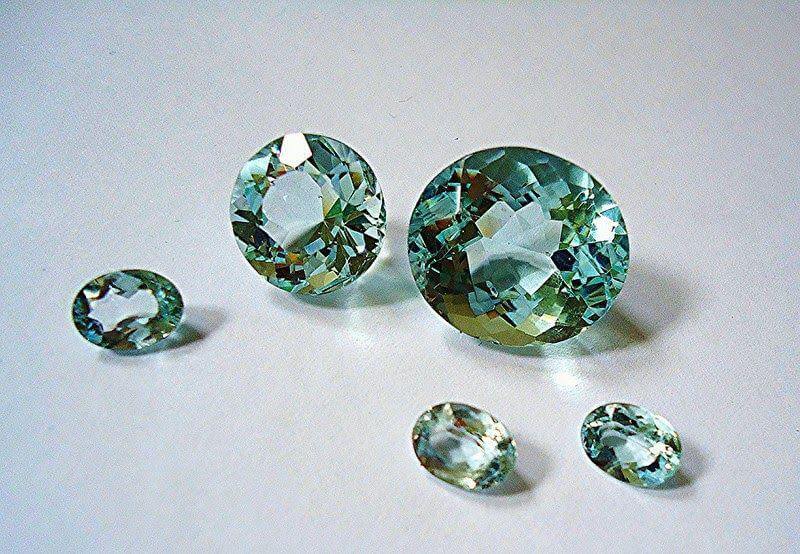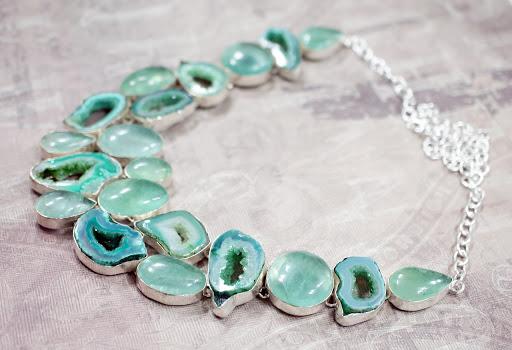Birthstones are gems – precious and semi precious – that are associated with the birth month of an individual. These colourful stones are often with good fortune, and hold significant meaning for the wearer. The stone of the month for March is the beauty called Aquamarine.
Where does Aquamarine come from?
 Aquamarine is essentially a blue variety of the naturally occurring mineral called Beryl. Aquamarine stones are generally of a pale blue-green hue that beryl achieves due to oxide impurities. If aquamarine is of a deeper blue colour i.e. with more impurities it can also be called maxixe. Most regions that produce beryl also produce the aquamarine variety. Geographically, aquamarine deposits can be found in Sri Lanka, Colombia, Brazil, US, Kenya and Madagascar amongst other places.
Aquamarine is essentially a blue variety of the naturally occurring mineral called Beryl. Aquamarine stones are generally of a pale blue-green hue that beryl achieves due to oxide impurities. If aquamarine is of a deeper blue colour i.e. with more impurities it can also be called maxixe. Most regions that produce beryl also produce the aquamarine variety. Geographically, aquamarine deposits can be found in Sri Lanka, Colombia, Brazil, US, Kenya and Madagascar amongst other places.
The significance of Aquamarine

The name aquamarine is derived from the latin phrase aqua marinus which translates to ‘water of the sea’, a reference to it’s sparkling sea-like colour. Ancient Romans have associated the stone with powers of protection against dangers of the sea. It is also regarded highly when it comes to spiritual balance and cleansing of energy. Aquamarine is known to have a calming effect on people, and being connected with the throat chakra, it is said to empower the voice of the wearer allowing them to speak with clarity and impact.
What’s an Aquamarine worth?

Valued for its excellent hardness as well as it’s beautiful colour, aquamarines are one of the most popular coloured gemstones in the market. As much as it enjoys its popularity, it is also available to purchase at quite an affordable price. Like all gemstones, the 4Cs (cut, colour, carat and clarity) will come into play when valuing the aquamarine, however it’s specifically the colour that plays the most important role. Clear pale blues are more highly valued in comparison to those with greenish hues.
High quality aquamarines of under 5 carats can generally be found to be priced around $100 to $250 per carat. The stronger the green hue, the lesser the price will tend to be, unless it’s a deep green and then it’s no longer aquamarine but emerald.
Aquamarine as jewellery
As a birthstone for those born in March, aquamarine can be adorned as a ring or pendant. Given its transparency and hardness, aquamarines tend to look a lot like coloured diamonds with relatively lesser sparkle. Similar to diamonds, they set beautifully against sterling silver and platinum.
Aquamarine can be combined with silver to make gorgeous studs that can be worn at formal events and gala parties. They will be sure to grab attention and needn’t be paired with a neckpiece if the size is large enough.

There’s a lot of variety when it comes to using aquamarine in jewellery. Besides rings, pendants and earrings it’s also a favorable stone for bracelet designs. Whether it’s a chunky bracelet or a delicate chain with stones, aquamarine of any hue and transparency is bound to turn the simple ornament into a statement piece.
